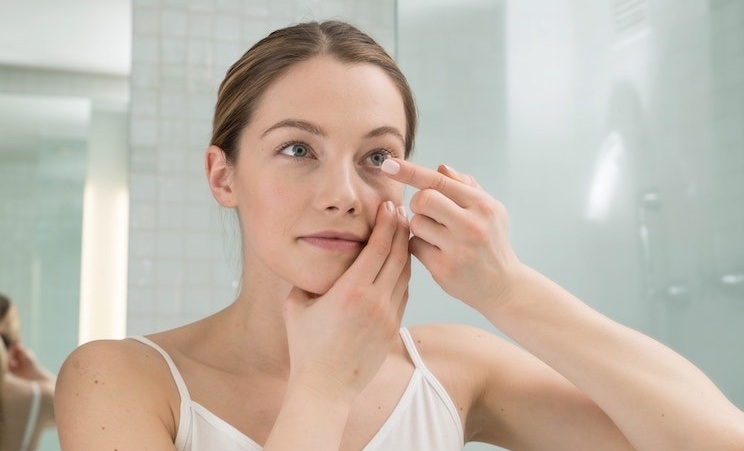
Orthokeratology consists of the adaptation of a specialised contact lens that exerts a shaping effect on the cornea at night, while we sleep. In this way, when the patients take it off in the morning, they can see well throughout the day without needing glasses or contact lenses.
When a person starts sleeping with the orthokeratology lenses, the graduation defect begins to decrease and the effect is gradually noticed with the regular use. For instance, for a person with a 4 diopters myopia, it will take around 2 weeks to see well throughout the day, although the exact period will depend on each person. Meanwhile, during the day, disposable contact lenses can be used to compensate for myopia that has not yet been corrected.
Orthokeratology can be used in children from 5 or 6 years old to adults in their 50s or 60s. Even so, it must first be assessed whether it is possible to adapt ortho-k lenses to the prescription or refractive defect of each patient.
In the case of myopia, graduations of up to 4 or 5 diopters can be easily treated. However, some patients with ideal characteristics that present up to 8 or 9 diopters can be treated. Regarding hyperopia, we could use ortho-k lenses in cases of up to 3 or 3.5 diopters, and regarding astigmatism, up to 3.5 or 4 diopters.
In any case, and since each eye is unique, it is necessary to carry out a personalized and detailed study that assesses whether the patient meets the requirements to use orthokeratology lenses. This study includes a test called corneal topography, which consists of obtaining a three-dimensional map of the patient’s cornea to determine if it can be molded. In addition, the ocular surface, the integrity and the quality of the tear film are evaluated. All this, together with the number of diopters to be treated, will allow us to assess whether or not the candidate is suitable for orthokeratology.
Still, the patient must bear in mind that orthokeratology does not make myopia disappear nor does it eliminate it. For adults, what it achieves is to have it camouflaged throughout the day thanks to the night use of the lenses, which allows a zero graduation throughout the day. In the case of children, orthokeratology is used to try to prevent their myopia from continuing to increase. It has been statistically demonstrated that, through the use of orthokeratology, the increase in myopia is 47% lower than with the use of glasses or conventional contact lenses.
Adaptation is more specific than that of a conventional contact lens, since the lens is designed from the patient’s corneal topography, as if it were a mold. In addition, performing a corneal topography at each control visit will serve to monitor the changes that are being experienced.
We must not lose sight of the fact that it is not a conventional contact lens, but a lens to model the cornea. Therefore, during the first days or weeks of adaptation, frequent visits may be required in order to make some changes to the lens and, if necessary, change them until the specialist determines which ones work best.
No. Orthokeratology produces a temporary moulding of the cornea. Whenever we sleep with the contact lenses, the following day, when we take them off, we will see well throughout the day. But if we stop using the contact lenses at night, after 4 or 5 days the eye will fully recover its shape and the patient will return to his usual prescription.
However, some patients with low myopias can use contact lenses on alternate nights, although, a priori, it would be necessary to use them every night to enjoy good vision throughout the next day.
It is true that contactologists always say that you should not sleep with conventional contact lenses. However, orthokeratology lenses are manufactured with a special design and material which is ultra-permeable to oxygen and allows patients to sleep through the night without posing an added risk to them or their corneal health.
It is not a lens designed to see well while wearing it, but if you have to get up at night to go to the bathroom, for example, there should not be any problem to see correctly.
Manufacturers recommend changing lenses every year, basically to ensure good eye health. Perhaps the lenses could continue working for a longer period, but in order to minimize eye risks and maintain its optimal conditions it is advisable to replace them annually.
During their period of use they require specific care that does not differ too much from the typical procedure required for conventional lenses. Simply, when getting up, users have to remove the lenses, leave them in a specific liquid throughout the day and put them back at night. What is important is to fill the contact lens with artificial tear before putting it on, so that during the whole night there is some tear between the contact lens and the cornea. This will give these lenses a further safety, since the cornea remains moist and hydrated during the night.

Contact us or request an appointment with our medical team.